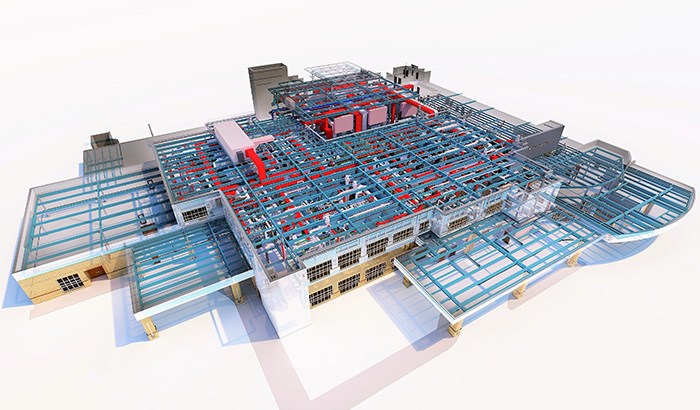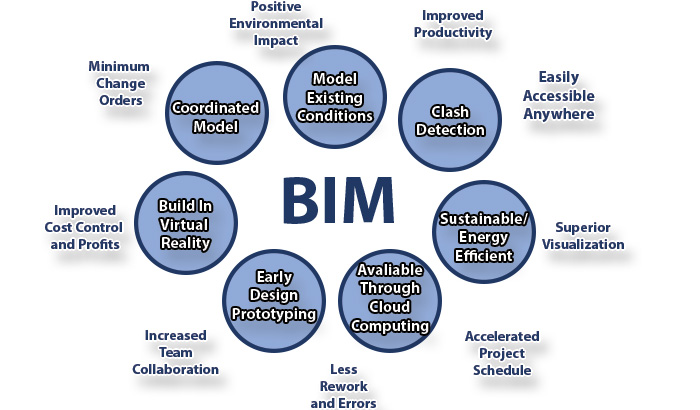Executive Guide: BIM Modeling Adoption - The Thought Behind the Design
Creating Value and Reducing Risk with BIM Execution in the A/E/C Industry

Over the last few decades, technology has immensely influenced the way that we interact with the world around us including the way we live, work and communicate. In the architectural, engineering and construction (AEC) industry, the technological influences of Building Information Modeling (BIM) has revolutionized how a structure is designed and built, but also the way in which a project team collaborates.
So, what exactly is BIM and why has this technological advancement had such an impact on design and construction?
For starters, BIM technology is a process that uses digital 5D models or prototypes to integrate information and parameters that are relevant to building design, structure and systems. When complete, this intelligent model contains geometry and data to support the planning, design, construction and management of a building project. When we say “5D models”, we mean that BIM models consist of three spatial dimensions with the addition of scheduling data and cost estimates.
BIM differs from traditional CAD drawings because the model consists of intelligent objects that stay consistent throughout the design process when changes are made and when multiple entities work with the model. A project team made up of architects, MEP engineers, structural engineers and contractors can now fully visualize and animate a project before ground has even broken. The impact that BIM has had on the AEC industry significantly improves collaboration, saves time, reduces costs and allows for flawless design practices.
BIM sounds like a design and construction development dream come true right?
Yes, but every member of the design and construction team needs to be on board for this model to function correctly in real world situations. This means that designers need to generate a model that is accurate enough to directly hand over to the contractor. What happens frequently is that designers are using their BIM models as only a reference and the model is not part of the actual contract documents. On the other end, contractors do not always trust that the information in the BIM model from the designers is accurate enough to use directly.

Designers Creating High-Level Models for Contractors
The AEC industry is rapidly adapting, with more and more designers striving for BIM models that are of the highest quality and can be given directly to contractors.
Some architectural and engineering firms are even doing all of their design work in BIM and offer it as their standard design end product. Early adopters of using this new technology to the highest level are seeing increased productivity and improved relationships with contractors and clients.
Since BIM models can be developed for many different purposes, and to many different levels of detail, it is important that designers, contractors and owners fully understand the value and risk reduction that BIM has the potential to execute. All parties should agree on the use of the final model early in design in order to develop the most effective solution.
To read more about BIM adoption, please see below to view or download JPT Architect's Executive Guide: BIM Adoption - The Thought Behind the Design.